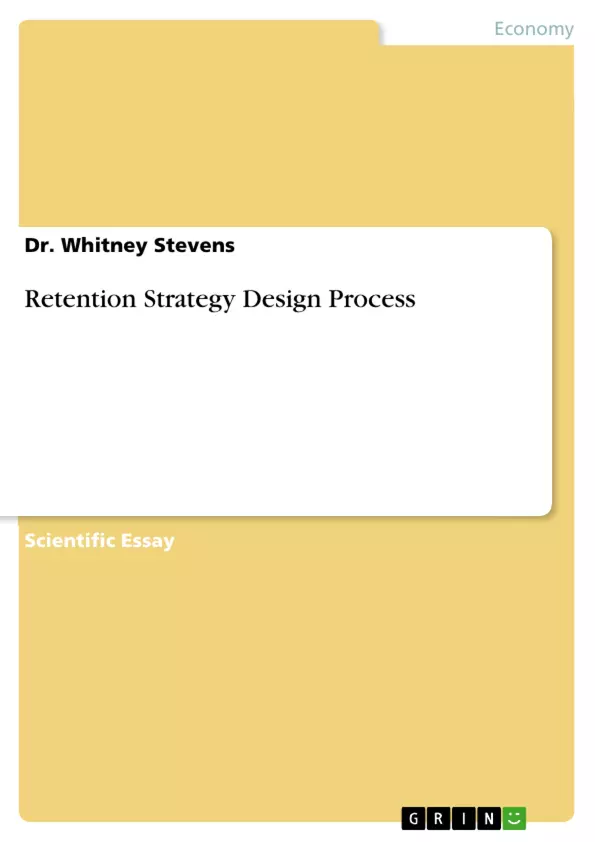This executive summary will identify a core process using Bruce Larue’s design process and outline. The inquiry process identified talent retention as the most important issue Countrywide faces today. The inquiry process determined how Countrywide treats, motivates, and compensates employees has a direct impact on talent retention and an overall effect on profitability, even in a declining market. This paper will discuss brainstorming results from a six-member action learning team consisting of two managers, one Vice President, one loan officer, and one processor. The design process will prioritize the gaps the inquiry process identified according to strategic importance with a cost and benefit analysis.
Inhaltsverzeichnis (Table of Contents)
- Abstract
- Introduction
- Gaps
- Justification and Prioritization
- Key Questions Asked
- Team Members
Zielsetzung und Themenschwerpunkte (Objectives and Key Themes)
This document presents a retention strategy design process for Countrywide, a company facing significant talent retention challenges. The aim is to identify and analyze key factors contributing to employee turnover and develop a comprehensive plan to improve retention rates.
- The impact of talent retention on profitability and organizational success.
- The cost of employee turnover and the benefits of retention strategies.
- Identifying and prioritizing key areas for improvement in retention practices.
- The development of a knowledge-based approach to retention strategy design.
- The importance of employee and management buy-in for successful implementation.
Zusammenfassung der Kapitel (Chapter Summaries)
- Abstract: This chapter introduces the paper's focus on talent retention at Countrywide, outlining the core design process and the impact of employee treatment, motivation, and compensation on retention and profitability.
- Introduction: This chapter provides a context for the retention strategy design process, highlighting the findings of an inquiry process that identified retention as a critical issue for Countrywide. The chapter emphasizes the importance of employee engagement and the need for a strategic approach to address the problem.
- Gaps: This chapter discusses the gap between successful talent retention and customer loyalty, emphasizing the importance of flexible and compatible retention strategies in a high-stress workplace. The chapter also examines the financial implications of employee turnover and the potential benefits of effective retention.
- Justification and Prioritization: This chapter presents the rationale for prioritizing employee retention at Countrywide. It emphasizes the need for a comprehensive understanding of retention issues, including tenure, location, demographics, industry, employee value, and job type. The chapter also highlights the importance of benchmarking and evaluating retention effectiveness across the organization.
- Key Questions Asked: This chapter details the questions used to guide the brainstorming process for developing the retention strategy. These questions explore the initiative, timeline, potential obstacles, desired outcome, impact on stakeholders, and success measurement.
- Team Members: This chapter introduces the members of the six-member design team, outlining their backgrounds and expertise in the mortgage industry. The chapter highlights the diverse perspectives and skills brought to the team.
Schlüsselwörter (Keywords)
The key terms and concepts explored in this text include: talent retention, employee turnover, organizational success, profitability, customer loyalty, retention strategies, knowledge-based approach, benchmarking, and stakeholder engagement. The paper investigates the strategic importance of retention within a competitive business environment, highlighting the need for effective strategies to attract and retain valuable employees.
- Quote paper
- Dr. Whitney Stevens (Author), 2006, Retention Strategy Design Process, Munich, GRIN Verlag, https://www.grin.com/document/189612



